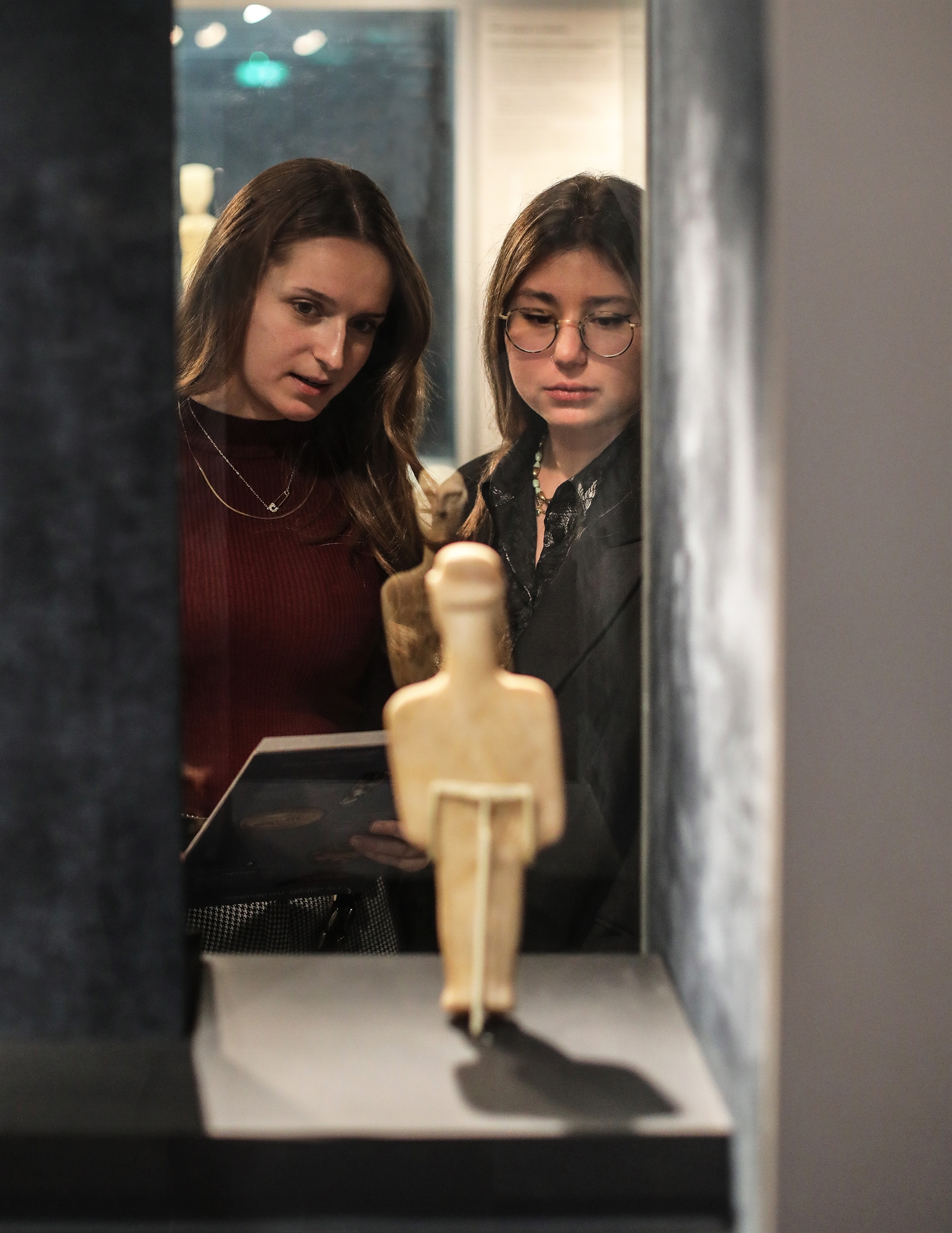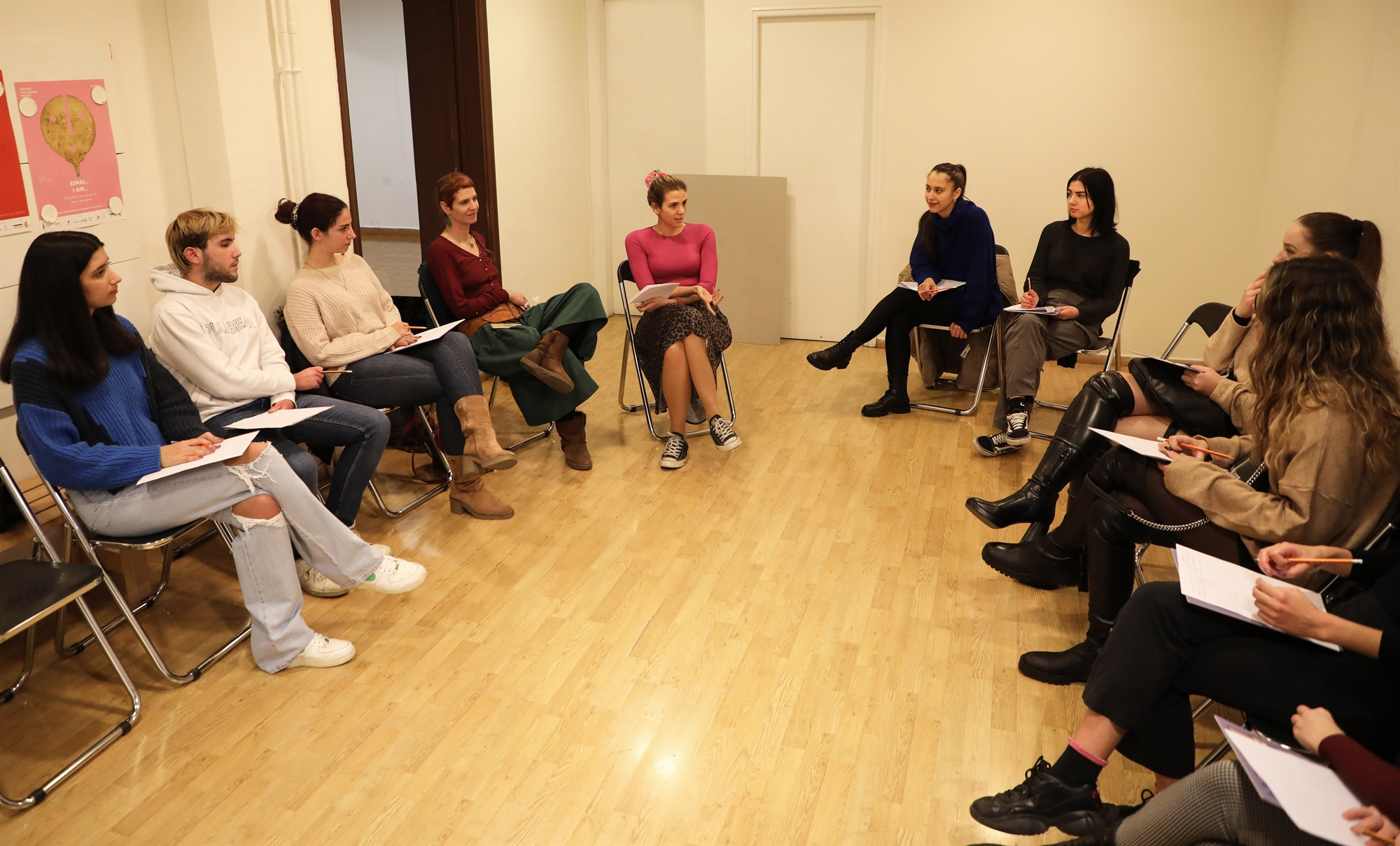
The World Mental Health Organization has long emphasized the beneficial effects of art on human health. As more than 3,000 studies over two decades have shown, culture plays an important role in disease prevention as well as in the treatment of disease.
Canada has taken the first step. The Francophone Medical Association, in collaboration with the Montreal Museum of Fine Arts (MMFA), has been prescribing free admission to museums and galleries for people with mental health problems, as well as eating disorders, cancer, Alzheimer’s, etc. since 2018. Last year they followed followed by their colleagues from Brussels who tried museum visits as part of their treatment plan.
In Greece, a memorandum of cooperation in the field of cultural purposes has been signed since September 2021 by Deputy Minister of Culture Nicholas Giatromanolakis and Deputy Minister of Health Zoe Rapti. A program that has joined the Recovery Fund with a budget of 10.5 million euros.

Meanwhile, the Museum of Cycladic Art launched the Personal Development Program “From Life to Collective Well-Being” a few days ago in collaboration with the Institute of Mental Health of the National University (EPIPSY) and with the support of the Athena I. Martinou Foundation. . It includes three main lines of action aimed at specific groups of young people as well as the general public. Specifically, three cycles of workshops for teenagers, with the help of the museum’s art therapist and EPIPSY mental health professionals, will focus on various topics that affect mental health issues. The goal is to raise awareness of adolescents about health issues, as well as to develop mental abilities. The second pillar is special guided tours for the general public, which take place once a month in the museum’s permanent collections and aim to raise awareness of mental health issues using its exhibits as a starting point. The third pillar is a negotiation to which mental health professionals will be invited.
“These interventions are addressed to the community and effectively meet the emerging needs in it through fruitful collaboration and open, creative interdisciplinary dialogue,” Marina Oikonomou, Professor of Psychiatry at the Greek University of Athens and Scientific Director of the Department of Social Psychiatry. , says “K” from Psychosocial Care, EPIPSY. And emphasizes that the initiative “From life to collective well-being: a program of personal development in the museum” is guided by this logic and is a combination of science, art and cultural heritage. “Through this lens, talks, special tours and workshops will try to illuminate the meeting between the specialist, the artist and the general public, shed light on the mystery of the human psyche, ask questions, inspire and, in the end, move together.”
Marina Oikonomu notes that art is used as a tool with a dual direction of action: “On the one hand, it provides an opportunity to turn to oneself, reflect and reflect on one’s thoughts and feelings, and on the other hand, to find connections. with “others”, with society and the environment. Strengthening the reflective functions of a person, as well as his social and social networks, increases individual well-being, as well as the well-being of the community in which the individual lives and interacts.

Over the past twenty years, more than 3,000 studies have shown that the culture even helps in the treatment of diseases.
Data from the World Health Organization and the OECD show that adolescents and young adults (18–21 years old) are the most vulnerable group to develop mental illness in the midst of a pandemic, with some scholars speaking of a “silent mental health pandemic”.
The program “From Life to Collective Well-Being” is not a cure, but a prevention,” psychologist and project coordinator Lili Peppu tells K, and focuses on the first meetings. “They really like it, and they showed it because they came again. In these programs, the point is to keep the youth. It is important for them that they are in a neutral space, in a museum, and that they can speak freely. Giving them incentives, we help them to understand their inner world. Some teenagers liked the raw exhibits, the ones that didn’t work out. This is when we begin to shape the inner world. Others were clearer, they liked certain shapes because they reminded them of their own stuff.”
One might wonder why they focus on these eyelids? According to studies, in the last decade in Greece, there has been a slowdown in the psychological development of children and adolescents. The current 18-21 year olds during the economic crisis were 5-8 year olds, meaning they survived two crises, economic and medical, at a sensitive age. Therefore, they are doubly vulnerable to developing mental health problems.
How important is the alternative context of meetings? “The museum is a safe space. Art and its exhibits become an occasion for people to think, open up and discuss, to get something out of themselves,” says Marina Platy, director of the current department of educational and social programs of the Museum of Cycladic Art. He emphasizes that “museums should be open and designed for everyone.”
And he recalls that the museum has also raised awareness for programs such as those for the visually impaired, children with intellectual disabilities, programs for the elderly over 65 with a visit to the museum, or a museum for public non-profit nursing homes with special workshops. , etc. He mentions that the permanent collections are accessible to people with deafness, that they can attend guided tours in sign language, that there are intercultural workshops for children, etc.
Most visitors to the Museum of Cycladic Art drew attention to the Cycladic figurine with folded arms. For psychologist Lily Peppu, comments are interesting: “Some people think that the form hugs itself, others think that it hurts, others that it has a contraction. We ask them to choose and, accordingly, we put forward topics for discussion and tell them about ourselves. We also asked them to keep – if they wish – a personal diary of these meetings to see how their ideas are built and track the evolution of their thinking.”
In discussions, they showed that they were concerned about their situation in the context of the pandemic. Even the way they leave school for university. How do you keep a piece of your childhood in the process of growing up. They want to be able to express themselves freely.
The next goal is the cooperation of the museum with the School of Fine Arts, EKPA, Panteio and the University of Peloponnese.

And a cultural recipe
At the international conference “CoMu-seumó” recently organized by the Benaki Museum, the US Embassy in Greece and the British Council, Deputy Minister of Culture and Sports Nicholas Giatromanolakis, responsible for contemporary culture, touched upon cultural prescriptions. stressed that the goal is a holistic and comprehensively developed policy.
Visiting art spaces for medical reasons is also promoted in our country by the ministries of culture and health.
He argued that “Almost no other country in the world plans a cultural prescribing program so vast, nationwide in scope, and fully integrated into the health care system. A program that can benefit both the healthcare system itself and cultural institutions that will be able to expand their field of activity, but, above all, the patients themselves, who will have access to additional methods of treatment.”
We still have a long way to go until the legal, organizational and scientific base is formed to include actions in the IDIKA electronic prescription system. Interestingly, however, participation in the pilot programs is estimated at 5,000 beneficiaries (call for interests). Also collaboration with: National Museum of Modern Art, MOMus, National Opera, State Orchestra of Athens, National Theatre, State Conservatory of Thessaloniki and others. income for cultural operators”.
Source: Kathimerini
Ashley Bailey is a talented author and journalist known for her writing on trending topics. Currently working at 247 news reel, she brings readers fresh perspectives on current issues. With her well-researched and thought-provoking articles, she captures the zeitgeist and stays ahead of the latest trends. Ashley’s writing is a must-read for anyone interested in staying up-to-date with the latest developments.